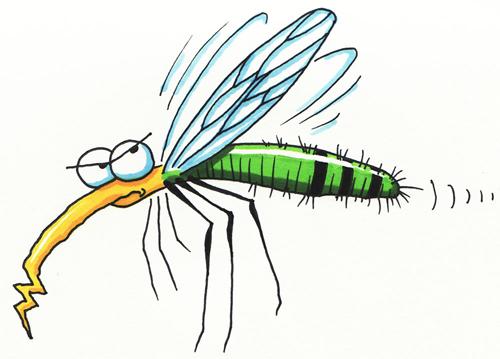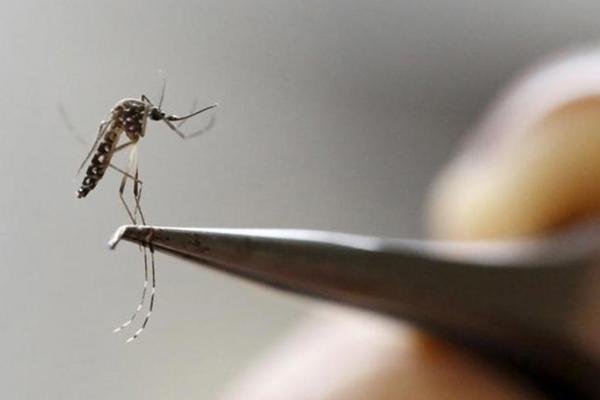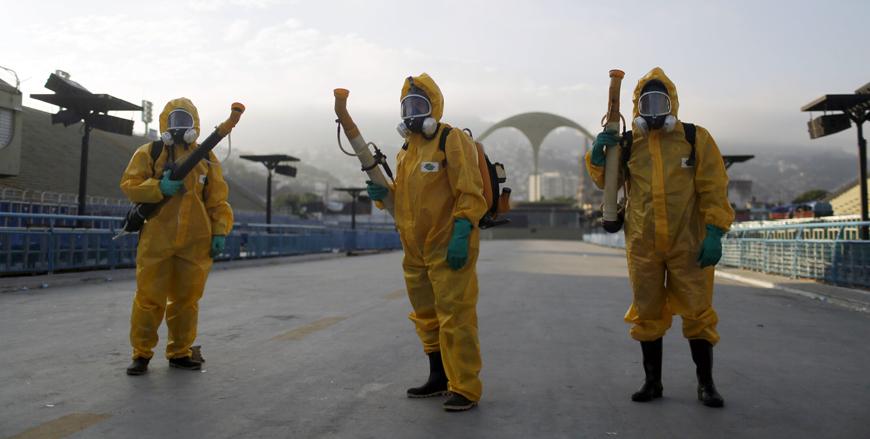You are here
Mosquitoes: can’t live with ‘em, can’t live without ‘em
By AFP - May 08,2016 - Last updated at May 08,2016

Photo courtesy of wordpress.com
PARIS — Mozzies. Skeeters. Stingers. Whatever you call them, mosquitoes do not get much love from our species.
And why should they? The buzzing bloodsuckers make us miserable and sick, and would appear to be devoid of any redeeming qualities.
But they are pretty amazing. Mosquitos, let it be said, are primeval and deadly.
Mosquitoes were annoying velociraptors and stegosauruses long before a giant meteor wiped out the dinosaurs at the end of the Cretaceous period. The oldest confirmed mozzie fossil is nearly 100 million years old.
Our nagging nemesis is also the most lethal creature in the world, responsible for more than a million human deaths every year, mostly children.
The Anopheles genus carries malaria, which killed some 600,000 people in 2015, according to the World Health Organisation.
It also causes painful and sometimes deadly ringworm in dogs, and gathers in swarms thick enough to choke a caribou.
Members of the Aedes genus, meanwhile, spread yellow fever, West Nile virus, dengue, chikungunya and the Zika virus, which scientists recently confirmed causes severe malformations of foetus brains. Others provoke various strains of encephalitis.
There are some 3,500 species in all.
They are invasive and nomadic and are everywhere except Antarctica. With a little help from us, mosquitoes are also highly mobile.
Hitching rides in luggage, cars, cargo ships and planes, many species have spread across the planet thanks to globalisation.
Old tyres and “lucky bamboo” plants are two of their favourite modes of transportation.
One species, Aedes albopictus, has colonised 20 countries in Europe in just the last 25 years, an expansion said to have been helped by global warming.
But skeeters do not move unless they have to.
“If you live next to a place where you are breeding mosquitoes, then they will not go two kilometres to find a blood meal, they will go 10 metres from the breeding place to you,” explains Eskild Petersen, a professor of tropical diseases at Aarhus University in Denmark.
They have a short travel span of a few hundred metres, and a lifespan of about two weeks.
And while their wings beat up to 500 times per second, mosquitoes only fly at speeds of about two kilometres per hour.
Salt marsh mosquitos, however, can voyage up to 170 km from their larval breeding ground in search of a meal.
Males and females are different. Very different.
Only the female — in search of protein for her eggs — consumes blood. Her sometimes virus-infected saliva contains an anti-coagulant to keep things flowing in both directions through her needle-like proboscis.
Males, meanwhile, are vegans, and only sip flower nectar. Whether that is why they only live half as long is unclear.
“Whatever else they are, mosquitoes have their place in ecosystems,” Fabrice Chandre, an expert on insect vectors at the Research Institute for Development in Montpellier, says somewhat grudgingly.
As waterbound larvae, mosquitos are filter feeders that consume single-cell algae, and are in turn a favoured food for fish.
As adults, they are tasty snacks for birds, bats and spiders. Weighing in at two to 10 milligrammes it takes a lot to make a meal. But then again, there are a lot of mosquitoes in the world.
Male mosquitos are important plant pollinators... and the seem to be indestructible.
Since the invention of the insecticide DDT in 1939, humans have been trying to wipe mozzies off the face of the Earth. But the insects get used to every new generation of poison, rebounding stronger than ever.
“We simply can’t eradicate mosquitos,” says Anna-Bella Failloux, an entomologist and mosquito expert at the Institut Pasteur in Paris.
But that doesn’t mean we won’t keep trying.
Related Articles
LONDON — As the world focuses on Zika’s rapid advance in the Americas, experts warn the virus that originated in Africa is just one of
LONDON — Countries battling the Zika virus should consider new ways to curb disease-carrying mosquitoes, including testing the release of ge
RIO DE JANEIRO — The more than 3,000 health inspectors in Rio de Janeiro are stepping up inspections for mosquito breeding areas near the ci

















